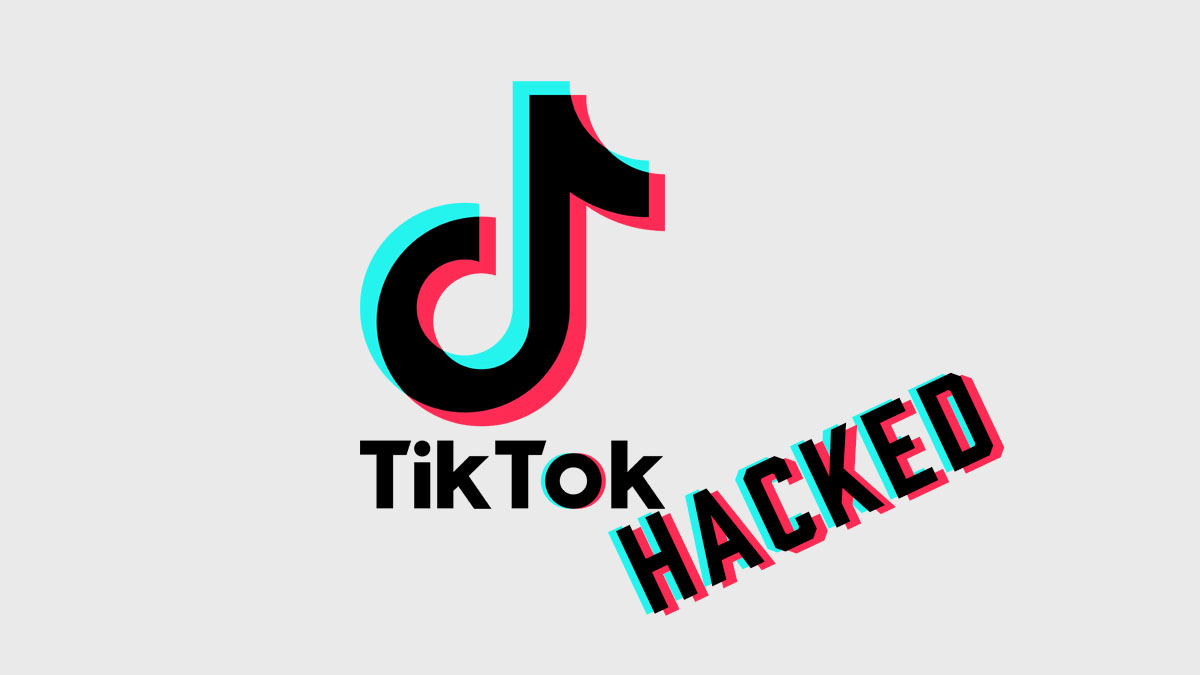- Posted on
- • Hacker University
How to Hack TikTok (educational)
- Author
-
-

- User
- Tony Capo - Social Engineer
- Posts by this author
- Posts by this author
-

How Easily Can TikTok Be Hacked: A Full Exploitation Analysis
TikTok, the global social media giant, boasts over a billion monthly active users sharing short-form videos. Its massive user base and data-rich environment make it an attractive target for cybercriminals. This article provides an in-depth analysis of how easily TikTok can be hacked, exploring potential vulnerabilities, exploitation techniques, and the platform’s security measures. Written for educational purposes, this piece aims to raise awareness about cybersecurity risks and encourage secure practices among users and developers.
- Introduction to TikTok’s Architecture
TikTok, developed by ByteDance, operates as a client-server application with a mobile-first focus. Its architecture includes:
Client-Side: iOS and Android apps built with native code (Swift/Objective-C for iOS, Java/Kotlin for Android) and frameworks like React Native for cross-platform components.
Server-Side: A cloud-based infrastructure leveraging services like AWS and ByteDance’s proprietary servers, with APIs handling user data, video uploads, and recommendation algorithms.
Data Storage: User data (profiles, videos, interactions) stored in distributed databases, with sensitive information (e.g., passwords) hashed.
Networking: HTTPS for secure communication, with WebSocket for real-time features like live streaming.
This complex ecosystem, while robust, introduces multiple entry points for potential attacks. Understanding these components is crucial for analyzing TikTok’s hackability.
- Potential Attack Vectors
Hackers targeting TikTok can exploit various attack vectors. Below are the primary categories, with an overview of their mechanisms and challenges.
2.1 Account Compromise
Individual TikTok accounts are the most common target due to their accessibility.
Credential Theft:
Phishing: Attackers create fake login pages mimicking TikTok’s interface to steal usernames and passwords.
Credential Stuffing: Using leaked credentials from other breaches, attackers attempt to log into TikTok accounts, exploiting users who reuse passwords.
Keylogging: Malware on a user’s device captures keystrokes to obtain login details.
Session Hijacking:
Attackers steal session cookies via unsecured Wi-Fi or cross-site scripting (XSS) to gain unauthorized access without credentials.
Password Reset Abuse: Exploiting weak email or phone number security, attackers intercept password reset links or codes.
Difficulty: Moderate. Success depends on user behavior (e.g., falling for phishing) and the strength of two-factor authentication (2FA).
2.2 Application Vulnerabilities The TikTok app itself can be a target for exploitation.
Cross-Site Scripting (XSS):
Malicious scripts injected into user-generated content (e.g., profile bios) could execute in other users’ browsers, stealing data or hijacking sessions.
Insecure Direct Object References (IDOR):
Flaws in API endpoints might allow attackers to access unauthorized user data by manipulating parameters (e.g., user IDs).
Code Injection:
Vulnerabilities in input validation could enable attackers to inject malicious code, potentially compromising the app’s functionality.
Reverse Engineering:
Attackers decompile the app to uncover hardcoded secrets (e.g., API keys) or manipulate client-side logic.
Difficulty: High. Exploiting app vulnerabilities requires advanced skills, access to source code, or significant reverse-engineering efforts.
2.3 Server-Side Exploits
TikTok’s backend infrastructure is a high-value target but harder to breach.
SQL Injection:
Poorly sanitized database queries could allow attackers to extract user data or manipulate records.
Remote Code Execution (RCE):
Vulnerabilities in server software (e.g., unpatched frameworks) could let attackers execute arbitrary code, potentially compromising entire servers.
API Abuse:
Misconfigured APIs might expose sensitive endpoints, allowing attackers to scrape data or perform unauthorized actions.
Difficulty: Very High. Server-side exploits require deep knowledge of TikTok’s infrastructure, often only feasible for state-sponsored or highly skilled attackers.
2.4 Social Engineering
Social engineering exploits human psychology rather than technical flaws. Impersonation:
Attackers pose as TikTok support staff to trick users into revealing credentials or clicking malicious links.
Influencer Targeting:
High-profile accounts are targeted with tailored phishing campaigns, leveraging their influence for broader attacks.
Content Manipulation:
Malicious links or scams embedded in videos or comments exploit user trust.
Difficulty: Low to Moderate. Social engineering is often the easiest attack vector, as it relies on user naivety rather than technical expertise.
- Historical TikTok Vulnerabilities
TikTok has faced several documented vulnerabilities, highlighting its susceptibility to attacks. Below are notable examples based on publicly reported incidents up to May 2025:
2020: IDOR Vulnerability:
Security researchers discovered an IDOR flaw in TikTok’s “Find Friends” feature, allowing attackers to access private user data (e.g., phone numbers, emails). ByteDance patched this promptly after disclosure.
2020: SMS Link Vulnerability:
A flaw in TikTok’s SMS-based account recovery allowed attackers to send malicious links to users, potentially compromising accounts. Fixed after responsible disclosure.
2021: Data Scraping Incident:
Attackers exploited misconfigured APIs to scrape millions of user profiles. While not a direct hack, it exposed TikTok’s data exposure risks.
2023: Phishing Campaigns:
Sophisticated phishing kits targeting TikTok users surged, with fake login pages mimicking the app’s interface. These campaigns underscored the effectiveness of social engineering.
These incidents demonstrate that while TikTok responds quickly to vulnerabilities, its scale and complexity make it a continuous target. No major breaches exposing TikTok’s core infrastructure have been publicly reported, suggesting robust server-side protections. 4. Exploitation Difficulty: A Technical Analysis
The ease of hacking TikTok depends on the target (user account, app, or servers) and the attacker’s resources. Below is a technical breakdown:
User Accounts:
Ease: High. Weak passwords, lack of 2FA, and susceptibility to phishing make accounts the easiest target.
Tools: Phishing kits (available on dark web forums), credential-stuffing bots, and malware.
Skills Required: Basic to intermediate. Script kiddies can use prebuilt tools, while targeted attacks require moderate expertise.
Application:
Ease: Moderate to Low. Exploiting app vulnerabilities requires reverse-engineering skills and knowledge of mobile security.
Tools: Decompilers (e.g., Frida, Ghidra), fuzzing tools, and exploit frameworks.
Skills Required: Advanced. Security researchers or experienced hackers are typically needed.
Servers: Ease: Very Low. TikTok’s cloud infrastructure is hardened with industry-standard protections (e.g., WAFs, intrusion detection).
Tools: Custom exploits, zero-day vulnerabilities, or insider access.
Skills Required: Elite. Only state-sponsored actors or top-tier hackers could realistically target TikTok’s servers.
Overall Assessment: Hacking TikTok at the user level is relatively easy due to human error, but compromising the app or servers is significantly harder, requiring substantial expertise and resources. TikTok’s proactive patching and bug bounty program further reduce the window for exploitation.
- TikTok’s Security Measures
TikTok employs multiple layers of security to protect its ecosystem:
Client-Side:
Code obfuscation to deter reverse engineering.
Runtime integrity checks to detect tampering.
Secure storage for sensitive data (e.g., Keychain on iOS, Keystore on Android).
Server-Side: Encryption (AES-256 for data at rest, TLS 1.3 for data in transit).
Web Application Firewalls (WAFs) to block common attacks like SQL injection.
Regular penetration testing and vulnerability scanning.
User Protections: Optional 2FA via SMS, email, or authenticator apps.
Account activity monitoring to detect suspicious logins.
Content moderation to limit malicious links in videos/comments.
Bug Bounty Program: TikTok partners with platforms like HackerOne, rewarding researchers for responsibly disclosing vulnerabilities. Payouts range from $500 to over $10,000, incentivizing ethical hacking.
These measures make TikTok a challenging target, though no system is entirely immune to attacks. 6. Mitigation Strategies for Users and Developers For Users: Enable 2FA: Use two-factor authentication to add an extra layer of security.
Use Strong Passwords: Create unique, complex passwords and avoid reuse across platforms.
Beware of Phishing: Verify URLs before entering credentials and avoid clicking suspicious links.
Update Regularly: Keep the TikTok app and device OS updated to patch known vulnerabilities.
Limit Data Sharing: Adjust privacy settings to restrict who can view your profile and content.
For Developers (TikTok and Similar Platforms): Secure APIs: Implement strict access controls and rate limiting to prevent abuse.
Input Validation: Sanitize all user inputs to mitigate XSS and injection attacks.
Patch Management: Promptly address vulnerabilities reported via bug bounties or internal audits.
User Education: Promote security awareness through in-app prompts and campaigns.
Zero Trust Architecture: Assume no component is inherently secure, requiring continuous verification.
- Hacking TikTok is not a trivial task, but its vast attack surface—spanning user accounts, mobile apps, and server infrastructure—presents opportunities for determined attackers. User accounts are the most vulnerable due to social engineering and weak security practices, while app and server exploits demand significant expertise. TikTok’s robust security measures, including encryption, 2FA, and a proactive bug bounty program, mitigate many risks, but no platform is invulnerable.
For educational purposes, this analysis underscores the importance of cybersecurity awareness. Users must adopt strong security habits, and developers must prioritize secure coding and rapid vulnerability response. By understanding TikTok’s potential weaknesses, stakeholders can better protect themselves and contribute to a safer digital ecosystem.